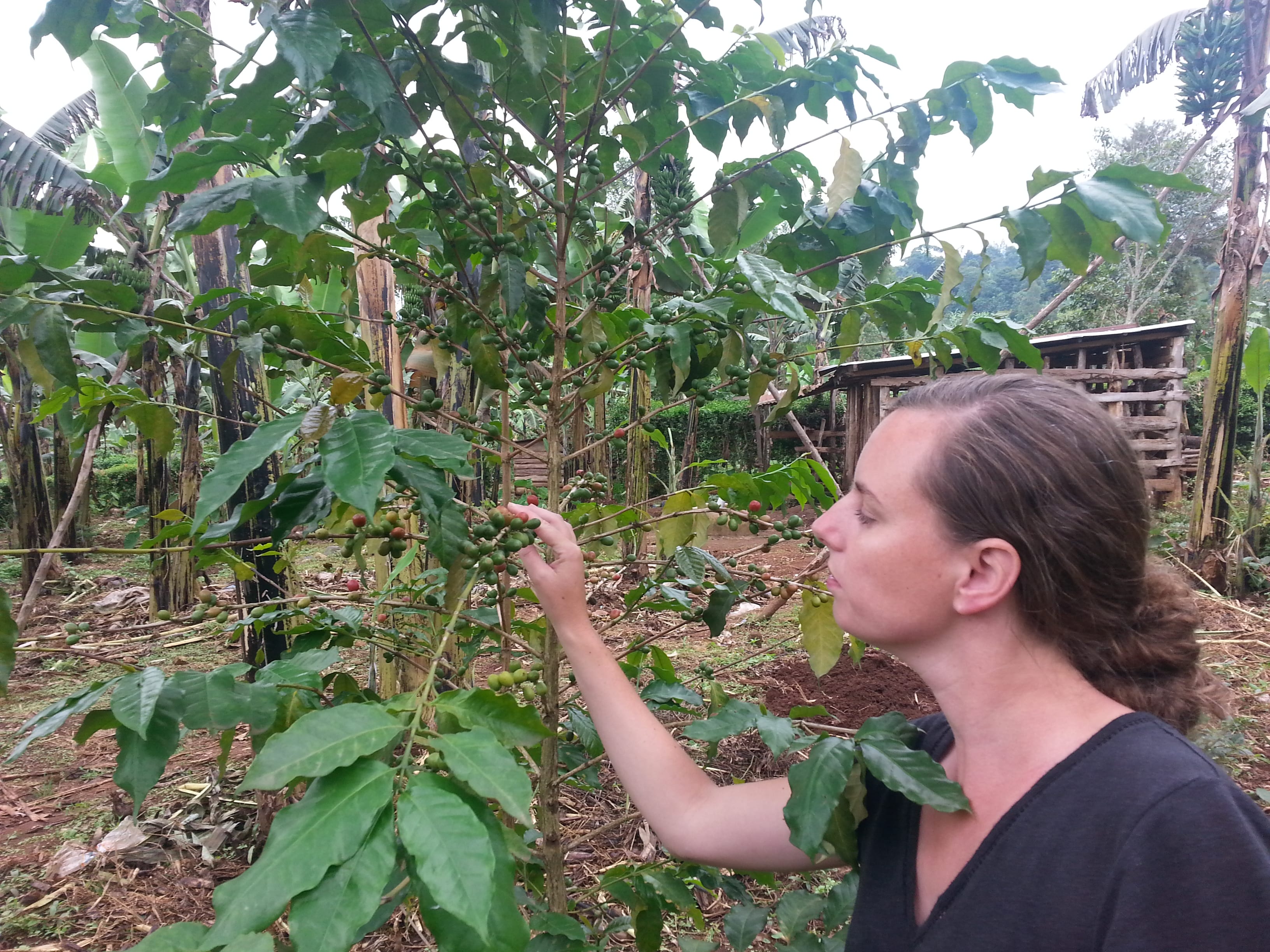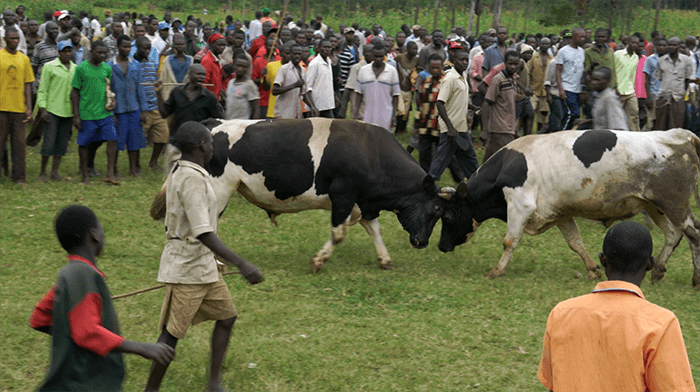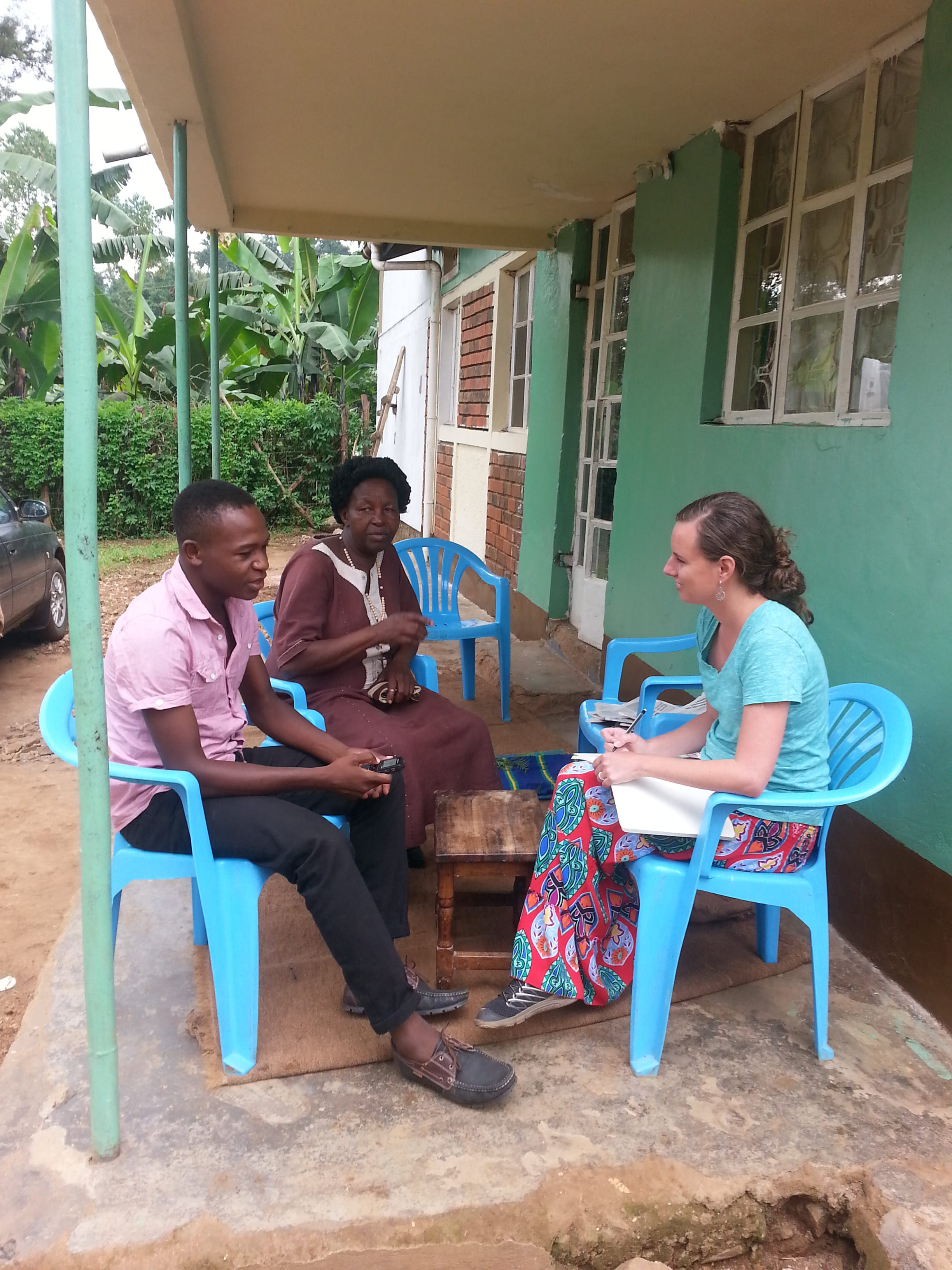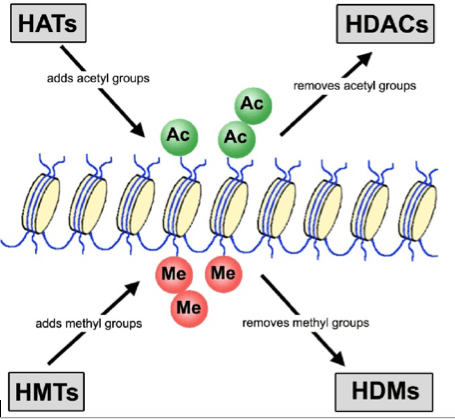Kelly Austin is an Assistant Professor of Sociology at Lehigh. She is in Bududa, Uganda this summer with a group of students pursuing her research in community health. You can see her previous posts here.
One of the key research projects I am working on here is looking at the hidden costs of coffee cultivation in Bududa. In this remote region, coffee is the only product that links Bududa to the international market. So far, I’ve interviewed over 20 coffee farmers, traders, and community leaders. For all but 2 of the interviews, I used Dezz’s assistance to translate and help co-conduct the interview. Sometimes, we walk out into the community and meet the farmers at their coffee garden. They are always very proud to show me their plants. Other times, Dezz organizes the interviews so that the participants come to the Zaale house to be interviewed. This has been the case with all the women I have interviewed, because if I had met them on their property, their husbands would have overseen the interview and I suspect I would have not gotten honest answers.
The gender inequalities with coffee are glaring. One of the key questions I ask is if they think that coffee growing benefits men and women equally in the community. All of the male growers I have interviewed contend that coffee benefits themselves and their wife (or wives) equally. They say they share all the money they get from selling the coffee with their wife or wives, and they use the money together to do things like pay for school fees for the kids, or buy clothes and other needed household items. However, when I asked the women and two community leaders this question, they give me a very different response. The women say that it is them who plant the coffee, maintain and prune the plants, bring

water from the river to coffee gardens that are high in the hills, spend hours and hours harvesting the coffee, and carry the dried coffee beans to the trader; then the men send them home with the empty containers. They never touch the money received from selling the coffee, or even know how much money is made. Many of them contend that their husbands use the money for drinking, feasting, and even to have sex with other women. They are left with nothing – but a backache, or worse. During one interview, one women pointed to her face, displaying a significant scar from below her eye across her cheek. She says, “This is what my husband did to me when I quarreled with him about the money from coffee.”
Continue reading Researching the Impacts of Coffee in Bududa


 ! Bullfighting is not like we think of it in the US, with a red-clothed matador beckoning a bull, but rather, large bulls fighting each other until one of them runs off, concedes, or is badly injured. It is essentially chaos, with hundreds of people (mostly men and children) on a large pitch (soccer field) running around, yelling, following whichever bulls are in action. The crowd scatters for their lives whenever a bull gets tired of fighting or concedes a contest, taking out whoever is in his way. Luckily, we saw no human injuries, and Peter and Dezz Zaale kept our Mzungu group safe at the top of an embankment behind some very thorny bushes. At one point, the bullfighting settled a bit, so they brought out a female bull to rile the fighting male bulls up. Boy did that work!
! Bullfighting is not like we think of it in the US, with a red-clothed matador beckoning a bull, but rather, large bulls fighting each other until one of them runs off, concedes, or is badly injured. It is essentially chaos, with hundreds of people (mostly men and children) on a large pitch (soccer field) running around, yelling, following whichever bulls are in action. The crowd scatters for their lives whenever a bull gets tired of fighting or concedes a contest, taking out whoever is in his way. Luckily, we saw no human injuries, and Peter and Dezz Zaale kept our Mzungu group safe at the top of an embankment behind some very thorny bushes. At one point, the bullfighting settled a bit, so they brought out a female bull to rile the fighting male bulls up. Boy did that work!
 from having brick walls, cement floors, and some paved “sidewalks” that connect the guest rooms, other conditions are a bit more rugged. There is no running water, and the electricity is very spotty. We use pit latrines and take “bucket baths”, where we use water that is harvested from the river to douse ourselves clean (or clean-ish). As I wrote in the last post, the roads are very bad here, you are either fighting dust or mud, and it takes about 1 hour to go ~12 miles. We most often walk to where we need to be.
from having brick walls, cement floors, and some paved “sidewalks” that connect the guest rooms, other conditions are a bit more rugged. There is no running water, and the electricity is very spotty. We use pit latrines and take “bucket baths”, where we use water that is harvested from the river to douse ourselves clean (or clean-ish). As I wrote in the last post, the roads are very bad here, you are either fighting dust or mud, and it takes about 1 hour to go ~12 miles. We most often walk to where we need to be.

 enough to see lions, a leopard, elephants, lots of variety of monkeys, giraffes, hippos, crocodiles, and more birds, butterflies, and antelope than you can imagine.
enough to see lions, a leopard, elephants, lots of variety of monkeys, giraffes, hippos, crocodiles, and more birds, butterflies, and antelope than you can imagine. Cipro, so we are putting the car to good use and taking the student to a hospital in the nearest town, Mbale (one hour away, on an extremely bumpy road). As I sketch out this post, I am sitting in the waiting room of Mt Elgon Hospital waiting for test results. We have been here for about 2 hours, and had to stand in many lines and go back to the cashier between each phase of the process to pay for the next step (e.g. consultation, lab, diagnosis, consultation again, pharmaceuticals). The entire cost was about 100,000 UGX (Ugandan shillings) or about $30. After the process, the student asked what happens to the extremely poor households he sees in the village that would never be able to afford private care. I explained that they would seek care at a government clinic, but these frequently have stock-outs (2-3 weeks per month) where no medications are available. They would be forced to pay out of pocket for the medicines at a local drug shop, which maybe they could or could not afford.
Cipro, so we are putting the car to good use and taking the student to a hospital in the nearest town, Mbale (one hour away, on an extremely bumpy road). As I sketch out this post, I am sitting in the waiting room of Mt Elgon Hospital waiting for test results. We have been here for about 2 hours, and had to stand in many lines and go back to the cashier between each phase of the process to pay for the next step (e.g. consultation, lab, diagnosis, consultation again, pharmaceuticals). The entire cost was about 100,000 UGX (Ugandan shillings) or about $30. After the process, the student asked what happens to the extremely poor households he sees in the village that would never be able to afford private care. I explained that they would seek care at a government clinic, but these frequently have stock-outs (2-3 weeks per month) where no medications are available. They would be forced to pay out of pocket for the medicines at a local drug shop, which maybe they could or could not afford.

